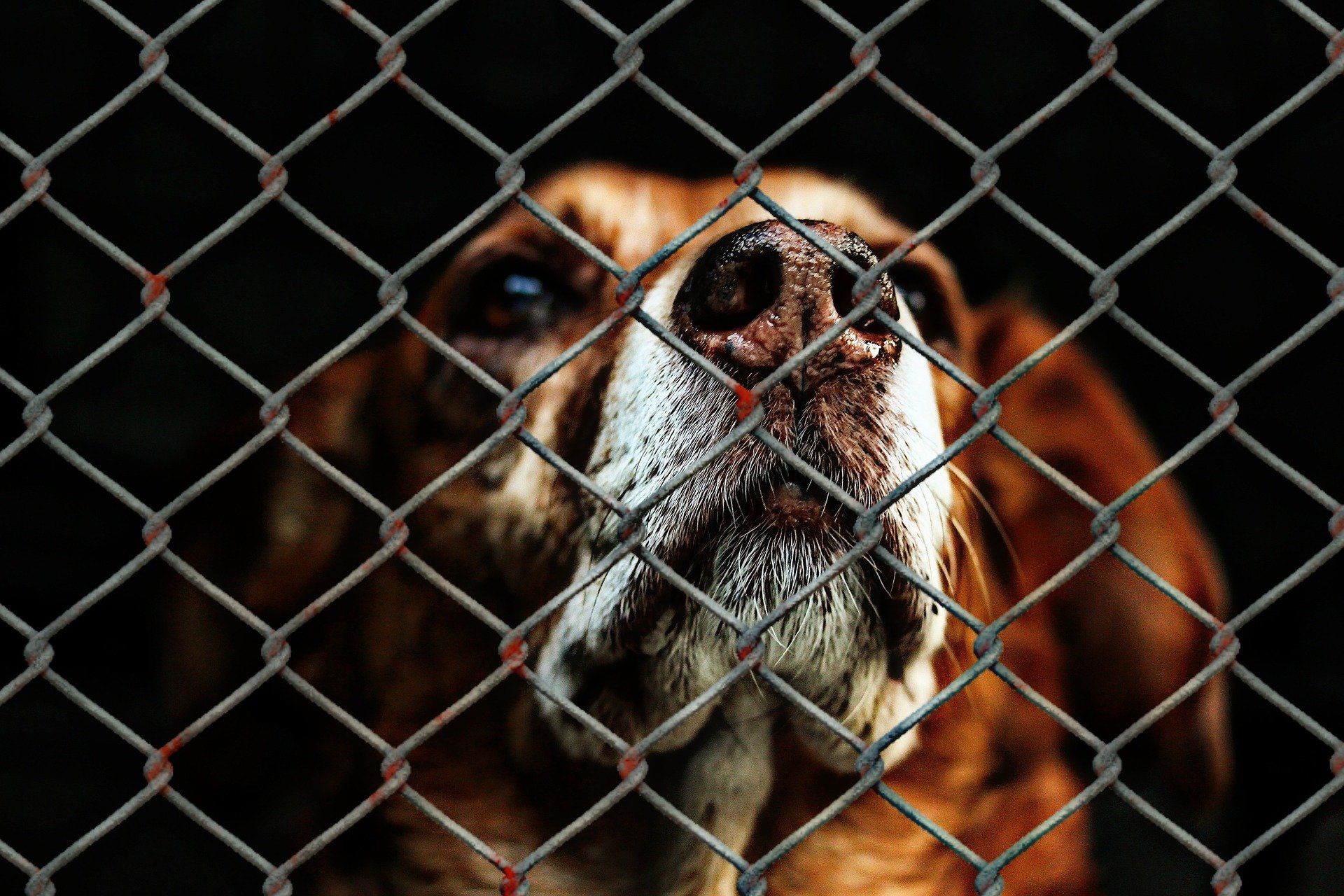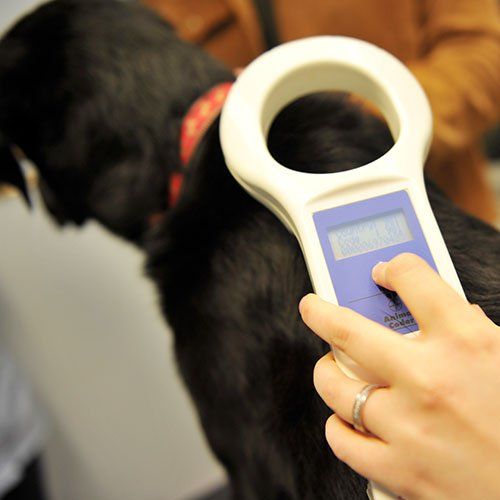MICROCHIPPING
Chipping your pet can make identifying them so much easier if they are lost, stolen or injured.
What is a microchip?
A microchip is a small device, a little bigger than a grain of rice, which is implanted under the skin using a special type of needle. The chip only contains a unique number which can then be cross referenced with the owners details when the chip is inserted and the animal is registered. The chip is "read" by means of a small portable hand-held scanner which is run over the animal. This quickly picks up the unique number and this means that the owners details can then be obtained and contacted.
The process of inserting the chip is relatively simple and doesn't require an anaesthetic - it is just like a normal injection. And takes literally a few seconds to perform.
What animals can be identified?
Any animal can be micro-chipped from a mouse upwards. However cats, dogs, horses, ferrets and valuable birds are the most common.
Why should I have my pet identified?
Dogs without microchips are less likely to be reunited with their owners.The microchip is a permanent and tamper-proof method of identifying your pet. The most common use for the microchip is if an animal is found without an owner present. The microchip can be read in a matter of seconds and then the owner details retrieved off the central database within minutes.
The most common reason for having to utilise the benefits of the microchips is with stray/injured animals. Both dogs and cats to tend to wander off and without a microchip they may not be reunited with their rightful owners. Collars are not tolerated well by cats and can easily be lost with both dogs and cats.
The microchip DOES NOT replace the disk on the collar as this can still be useful for a member of the public to return the dog easily should he/she be found. However collars/disks can be maliciously removed if the pet is stolen. This is not so for the microchip.
A microchip is a small device, a little bigger than a grain of rice, which is implanted under the skin using a special type of needle. The chip only contains a unique number which can then be cross referenced with the owners details when the chip is inserted and the animal is registered. The chip is "read" by means of a small portable hand-held scanner which is run over the animal. This quickly picks up the unique number and this means that the owners details can then be obtained and contacted.
The process of inserting the chip is relatively simple and doesn't require an anaesthetic - it is just like a normal injection. And takes literally a few seconds to perform.
What animals can be identified?
Any animal can be micro-chipped from a mouse upwards. However cats, dogs, horses, ferrets and valuable birds are the most common.
Why should I have my pet identified?
Dogs without microchips are less likely to be reunited with their owners.The microchip is a permanent and tamper-proof method of identifying your pet. The most common use for the microchip is if an animal is found without an owner present. The microchip can be read in a matter of seconds and then the owner details retrieved off the central database within minutes.
The most common reason for having to utilise the benefits of the microchips is with stray/injured animals. Both dogs and cats to tend to wander off and without a microchip they may not be reunited with their rightful owners. Collars are not tolerated well by cats and can easily be lost with both dogs and cats.
The microchip DOES NOT replace the disk on the collar as this can still be useful for a member of the public to return the dog easily should he/she be found. However collars/disks can be maliciously removed if the pet is stolen. This is not so for the microchip.

Are there any risks involved?
If the correct chips are used and they are implanted by qualified personnel, there is no risk. They remain in situ and they do not cause any reaction. Animals tolerate the chip very well.
Where are the microchips inserted?
The standard place for dogs and cats in just under the skin on the middle of the back, in between the shoulder blades. This is universally accepted position that the chips have to be placed as this makes scanning lost animals a lot easier and quicker as the person will know where to look for a chip.
If a chip isn’t found in the standard location - we always run the scanner over the rest of the body just to check that there isn't a chip anywhere else or in an odd locations!
So who has a reader?
Animals that have a microchip are easily scanned using a hand-held scanner.Most local vets, dog wardens, animal charities, police forces and animal rescue centres have a microchip reader, a situation that now exists throughout the country. So if your animal is lost, stolen or injured in an accident, whoever the pet is taken to, they should be able to identify your pet and inform you of the situation, so that you may be reunited. Although different companies may manufacture microchips, the readers are generally universal and will read all types of chip. This means that you do not rely on someone having a specific reader for a specific microchip.
As a Veterinary practice, we are often placed in a difficult situation when stray animals injured in road accidents are brought in to us. We always give such animals emergency care and do our best for them, but at the same time we do not want to create an enormous bill for an owner who may not be able to afford extensive treatment. If such animals were identified, we could seek authority for treatment before it was commenced.
If the correct chips are used and they are implanted by qualified personnel, there is no risk. They remain in situ and they do not cause any reaction. Animals tolerate the chip very well.
Where are the microchips inserted?
The standard place for dogs and cats in just under the skin on the middle of the back, in between the shoulder blades. This is universally accepted position that the chips have to be placed as this makes scanning lost animals a lot easier and quicker as the person will know where to look for a chip.
If a chip isn’t found in the standard location - we always run the scanner over the rest of the body just to check that there isn't a chip anywhere else or in an odd locations!
So who has a reader?
Animals that have a microchip are easily scanned using a hand-held scanner.Most local vets, dog wardens, animal charities, police forces and animal rescue centres have a microchip reader, a situation that now exists throughout the country. So if your animal is lost, stolen or injured in an accident, whoever the pet is taken to, they should be able to identify your pet and inform you of the situation, so that you may be reunited. Although different companies may manufacture microchips, the readers are generally universal and will read all types of chip. This means that you do not rely on someone having a specific reader for a specific microchip.
As a Veterinary practice, we are often placed in a difficult situation when stray animals injured in road accidents are brought in to us. We always give such animals emergency care and do our best for them, but at the same time we do not want to create an enormous bill for an owner who may not be able to afford extensive treatment. If such animals were identified, we could seek authority for treatment before it was commenced.

Cost
Please see our fees page for the current prices for microchipping. It is a one off payment and there are no subscription or annual fees to pay. As there are no working parts within the microchip - it will last for the duration of your pets life.
Please see our fees page for the current prices for microchipping. It is a one off payment and there are no subscription or annual fees to pay. As there are no working parts within the microchip - it will last for the duration of your pets life.

